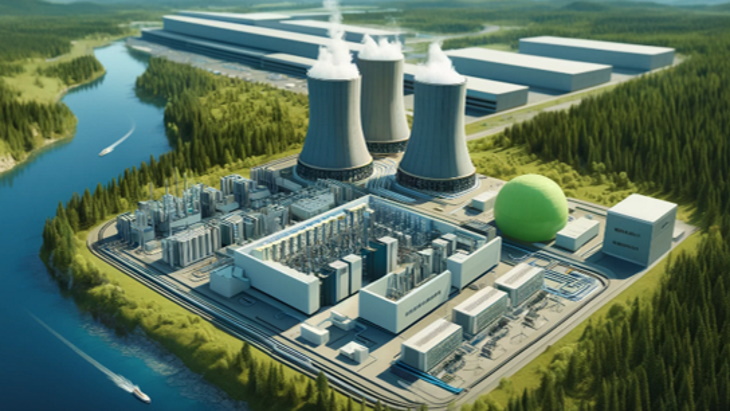
The company noted that estimates of future energy demand in Norway vary from 50 TWh to 233 TWh. However, it says the introduction of artificial intelligence (AI) makes existing forecasts about power requirements invalid. "Basically, the need for data processing and data storage, unlike everything else, is unlimited. Artificial intelligence accelerates this need exponentially ... in reality, this means that there is no longer a limitation in power demand."
Norsk Kjernekraft said that when hydropower was developed in Norway, industry was established where the hydropower plants were. However, with small modular reactors (SMRs), power production can now take place where the industry is located. "Because nuclear power, like hydropower, lasts for 100 years (with two upgrades after 60 and 80 years respectively), it gives the opportunity to recreate what hydropower has done for Norway. After the power plants have been paid off, they supply cheap electricity for a further 70-80 years - as hydropower has done."
In addition to generating electricity, nuclear power produces a lot of heat. High-temperature steam can be used for heat-intensive industries, such as for the production of steel and aluminium. It can also be also for carbon capture, as well as the production of hydrogen, ammonia and e-fuels. The residual heat can be used for district heating. According to Norsk Kjernekraft, all this reduces the need for electricity, and thereby also the need for grid development.
Building SMR power plants off-grid increases the value of the electricity because the rental of grid capacity is avoided, the company says. "In this way, the project economy for the nuclear power plants is improved, which is particularly important for the first power plants, which will be more expensive than the next ones. At the same time, the industry will receive guaranteed power supplies, which is of great value to a number of industry players."
By building the SMR power plant off-grid and in connection with heat-intensive industry, Norsk Kjernekraft says this ensures good project economics, while municipalities can build industry and jobs and ensure economic growth for future generations. Renewable power production can then be channeled towards other needs in Norway.
As an example, the company says Norway is attractive for data centers because it has a cool climate and is considered a 'safe' country. However, it says there will be no will to build many data centers if the power is to be supplied from land-intensive renewables. "With nuclear power, this problem is avoided. In addition, the nuclear power plant creates many jobs, both directly for the operation of the power plant, and indirectly for the industry that is being built."
Earlier this year, Google began construction of a data centre in the municipality of Skien - its first data centre in Norway - which is scheduled to begin operating in 2026. Google has said it wants 840 MW of electricity for the data centre over the next two decades. Norway's Energy Minister Terje Aasland has stated that Skien municipality must provide the power itself. The acting mayor has said the municipality will consider nuclear power.
Norsk Kjernekraft says it could build three or four SMRs of 300 MWe capacity each in connection with the data centre to deliver 900-1200 MWe of electricity (7.5-10 TWh annually). This, it says, is sufficient to meet the needs of the data centre as well as, for example, a green electrolysis factory for hydrogen as well as providing heat to industry in the area.
"Off-grid SMR will be used where it makes sense from a holistic point of view," the company said. "Regular connection to the network will still be considered where it makes sense, for example where extensive network infrastructure already exists or is planned. Hybrid solutions are also relevant."
Norsk Kjernekraft aims to build, own and operate SMR power plants in Norway in collaboration with power-intensive industry. It says it will prepare licence applications in accordance with national regulations and international standards. It will follow the International Atomic Energy Agency's approach for milestones, and focus on what creates value in the early phase. Financing will take place in collaboration with capital-strong industry and solid financial players.
The company entered into an agreement of intent last year on the investigation of nuclear power with several municipalities. In November, it submitted a proposal to the Ministry of Oil and Energy for an assessment into the construction of a power plant based on multiple SMRs in the municipalities of Aure and Heim. A corresponding report is in the process of being finalised for Vardø municipality. It is also investigating the construction of an SMR power plant at Halden. Last month, Norsk Kjernekraft said it had decided to initiate work on the impact assessment of a plot of land in Øygarden municipality, west of Bergen, to assess the possibility of establishing a nuclear power plant comprising up to five SMRs.